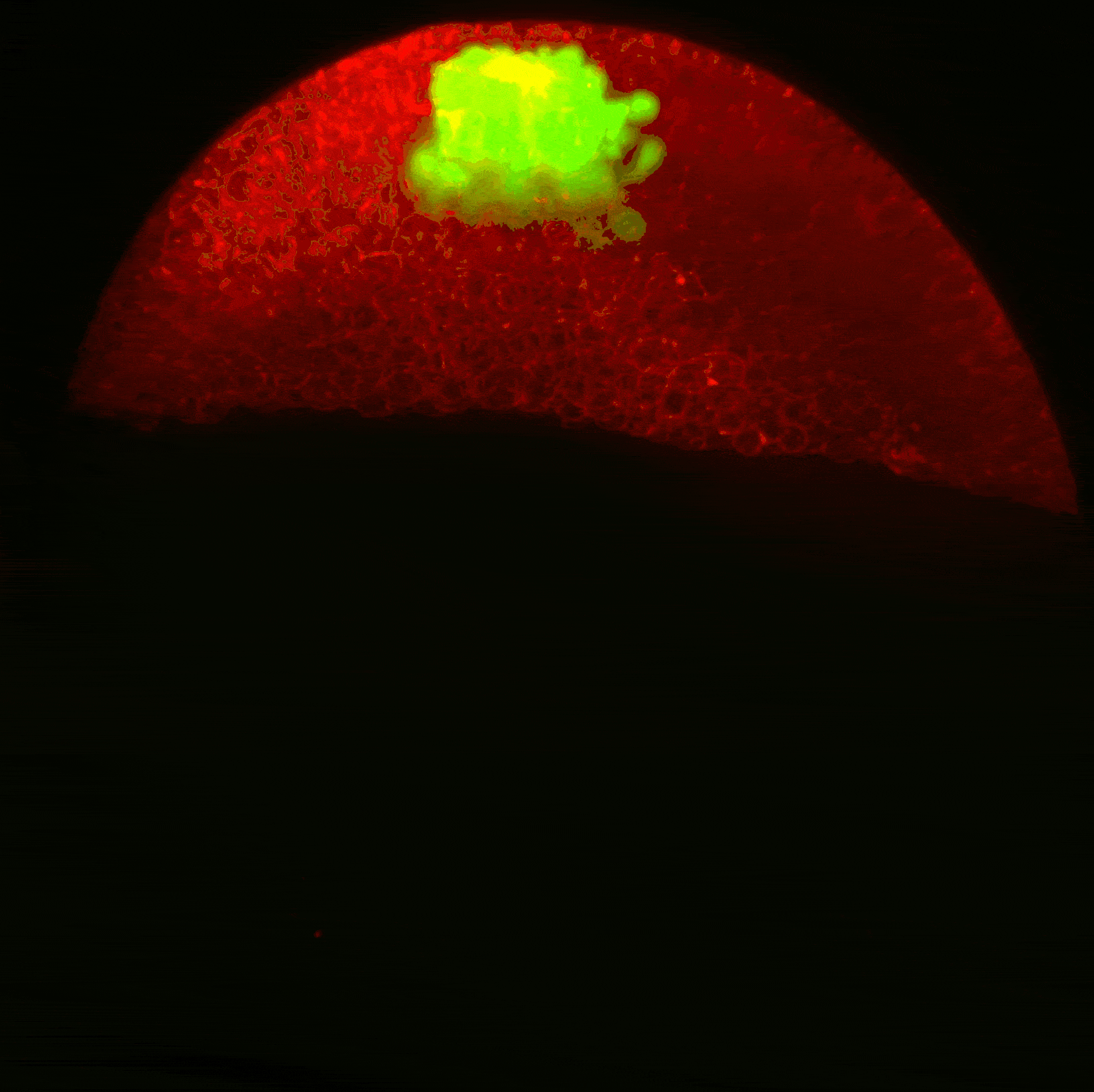Research
How do complex animals develop from single cells?
The Rogers lab uses molecular biology techniques, including microscopy and optogenetics, to investigate fundamental developmental biology questions: How do signaling molecules move to target cells? How they are interpreted once they arrive? How do multiple signaling pathways cooperate to pattern complex bodies? These key biological processes are involved in embryonic development and organogenesis, tissue repair and regeneration, and diseases such as congenital disorders and cancer.
Transplanted green cells secrete a long-range inhibitor that blocks signaling at a distance (read more here)
How do signaling molecules move through tissues?
Signaling molecules spread through embryonic tissues and regulate developmental genes. We are working to understand how signaling molecule distribution is controlled. We look at factors like signaling molecule mobility (using FRAP) and stability (using FDAP) to understand how they might impact signal distribution.
A gene responds to an optogenetically delivered signaling pulse (read more here)
How do cells interpret signaling?
In order to create functional adults, embryos must activate the right genes in the right place and time. A cell’s gene expression is a function of which signaling molecules it encounters, how much, and for how long. We are using strategies including molecular optogenetics to decode the “language” used by signaling molecules to regulate gene expression and organize the developing body.
Diverse gene expression in ~7 hour old zebrafish embryos
How do signaling pathways collectively coordinate patterning?
A surprisingly small number of signaling pathways control development across the animal kingdom. The combined action of these pathways orchestrates embryogenesis by creating diverse patterns of gene expression. We explore how combinatorial signaling inputs are interpreted by cells, and how this contributes to diverse gene expression.
Zebrafish embryos are a useful vertebrate research system
We can watch zebrafish embryo development live, for example in normal embryos (left) and in embryos that lack a key developmental signaling pathway (right). This microscopy-friendly research system provides a tractable platform to study how signaling pathways coordinate development.
Movie credit: Hannes Preiß
Molecular optogenetics
Molecular optogenetics approaches use light to manipulate biological processes, including those fundamental to development such as signaling (shown in magenta). We can control light exposure with LED systems, confocal microscopes, and digital micromirror devices. Some of our research involves using existing and novel optogenetics approaches to manipulate zebrafish embryos in order to address major questions in developmental biology.




